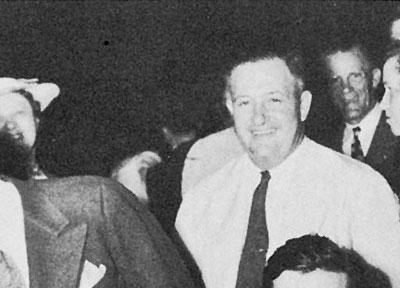H. Donald “Doc” Singer, Part 1
Pan Am’s Salesman/Humanitarian Extraordinaire
by Eric H. Hobson, PhD
Cartoon Illustrations by Vic Zimmerman, 1930s
"Pan American Air Ways," July 1935, p.7 (PAHF Collection).
Crowds swarmed Pan American Field’s dedication at 36th Street between north Miami and Hialeah on Wednesday, January 9, 1929, and crowds were still coming in August. Car and foot traffic (particularly on Thursday and Sunday) impeded paying passengers’ entrance and egress as Pan Am personnel struggled to differentiate travelers from gawkers. Rather than restrict access, W.O. Snyder, Pan Am’s Caribbean Division director, sought to provide all visitors accurate information tied to an engaging and memorable experience without impeding Pan Am’s primary business of moving U.S. mail in and out of Miami. Snyder and Vic Chenea, General Traffic Manager, envisioned the ideal solution as a ground-traffic controller -- like the circus’ Master of Ceremonies who keeps three rings of action on schedule while educating and entertaining the crowd and minimizing problems that arise.
Only a personable, patient, curious, informed, unflappable, outgoing, adaptable person could do this job…someone described a few years later as “a lecturer, diplomat, compendium of all aviation information, personnel manager, baggage master, operations authority, ticket checker, ladies’ man, school teacher, baby’s nurse, automobile traffic expert, alibi artist and gasoline tractor with plenty of gas—all rolled into one.”
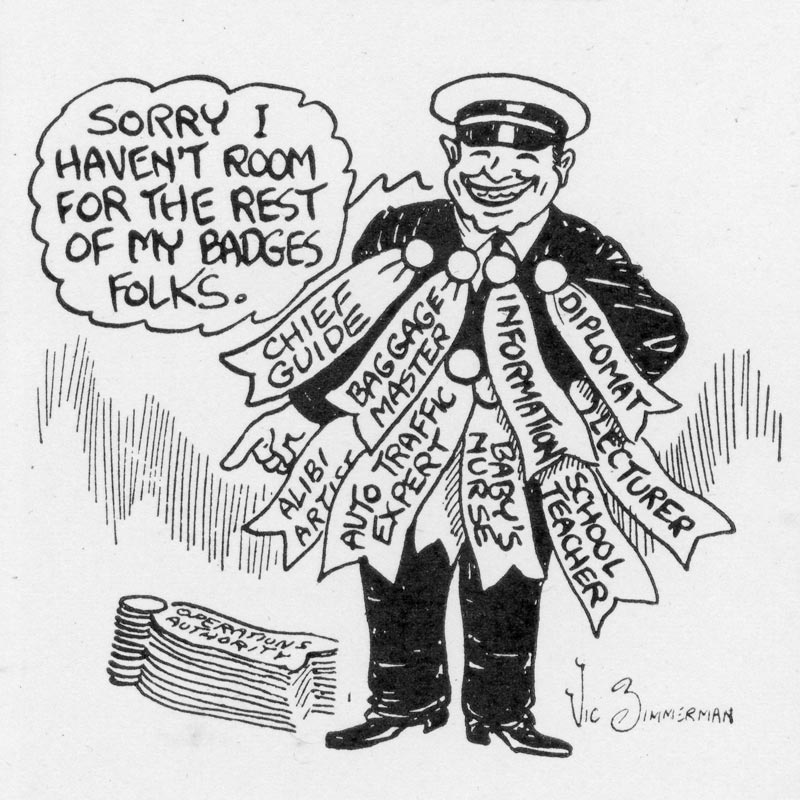
"Pan American Air Ways," February 1935, p.4 (PAHF Collection).
On Christmas Eve, Tuesday, December 24, 1929, Snyder introduced thirty-four-year-old H. Don Singer as Official Tour Guide and signaled a unique Pan Am ambassador’s reign. “Doc” Singer would refine the nascent position’s role, train staff and his replacements, and wear Pan Am white and blue for twenty-six years.
![]()
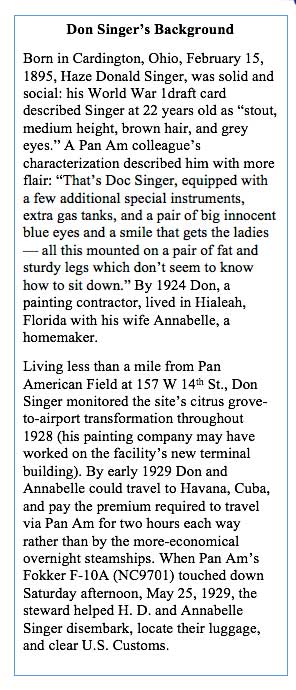
Don Singer's Background by Eric Hobson.
Singer soon hosted 200-300 visitors a day at Pan American Field, the country’s most modern passenger terminal and, on Saturday, November 11, 1933, interacted with 1,488 visitors, a short-lived one-day record. “Doc” needed help and Paul Muller left the maintenance department to become Don’s Assistant Airport Tour Guide. (1)
When Pan Am flight operations shifted to Dinner Key in 1934, tourist flow surged to 40,000 a month. The new base with its Art Deco terminal, complete with a lunchroom and full-service restaurant overlooking the docking piers, enticed many to dine and watch “Clipper” flying boats leave for and return from exotic places. Even if they weren’t boarding an airplane visitors could enjoy the accompanying hullaballoo.
Early Pan Am pilot, Maurice Lodeesen placed Don Singer in the midst of it all: “’Ladies and gentlemen!’” cried [Don] Singer, our Dinner Key airport guide, his rotund figure breathing reflected glory. “’Here is the American Clipper, largest commercial aircraft in the world. Forty passengers can be seated in the cabin which is wider by two feet than a regular Pullman railroad car. The ship is powered…’”
A four-part report filed by the “Flying Reporter” during 1935 began as a standard Pan Am Caribbean operations review but morphed into a Don Singer expose using the “You’re a better man than I am” conceit to show the Chief Airport Guide job’s many facets. The series torpedoed any idea that the job was cushy, one where “You could wear a uniform, look wise and experienced in man’s conquest of the air, show off the big ships, and smile at the ladies, with nothing much else to do.” Rather, readers were shown the myriad, unexpected, and unusual responsibilities that fell to Singer and his staff.
Describing the job’s many facets required full-page articles in Pan American Air Ways February, June, and July 1935 issues because the task variety was broad and the pace at which “Doc” accomplished each was daunting.
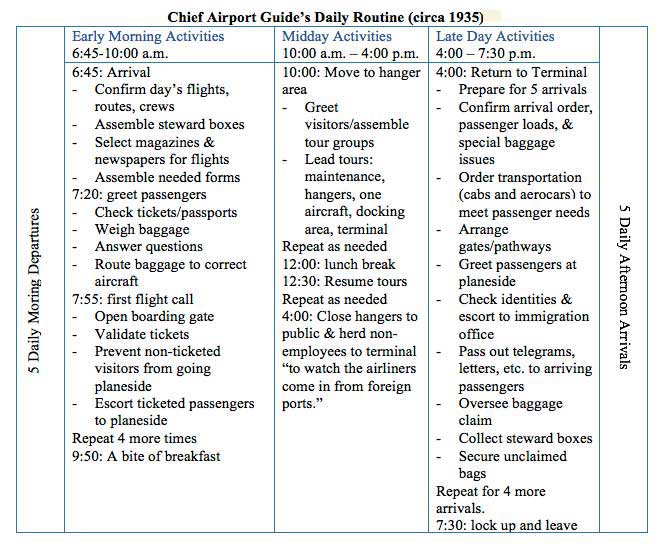
Chief Airport Guide’s Daily Routine (circa 1935, by Eric Hobson). (2)
The Flying Reporter concluded that, “After trying to follow him around on one of his sample days from 6:45 a.m. to 7 o’clock in the evening, I am willing to award him the fur lined mess kit for patience, perseverance, public contacts and long range non-stop ground flying under his own power.”
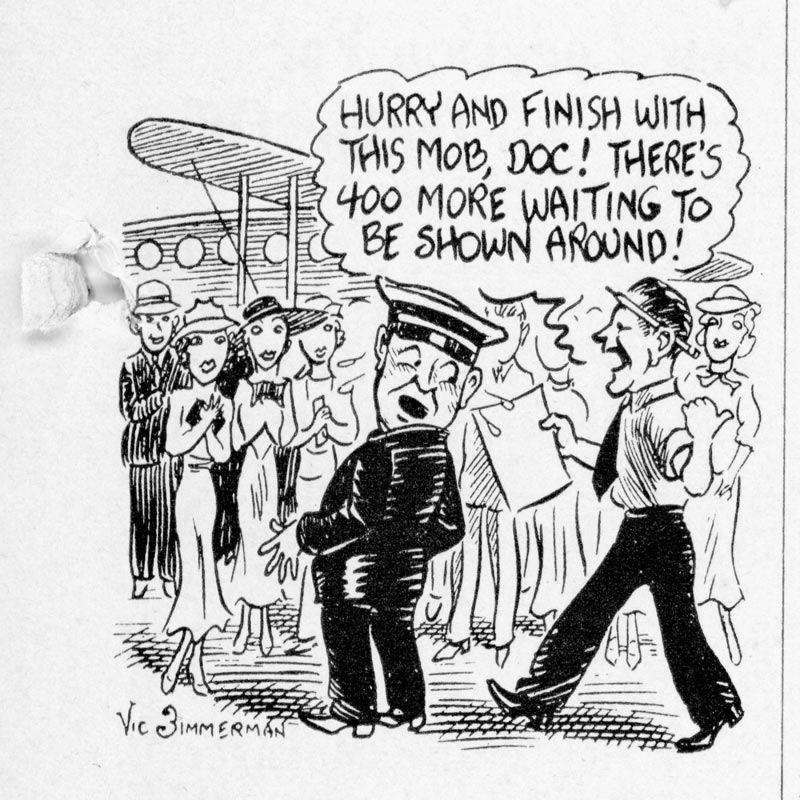
"Pan American Air Ways," July 1935, p.7 (PAHF Collection).
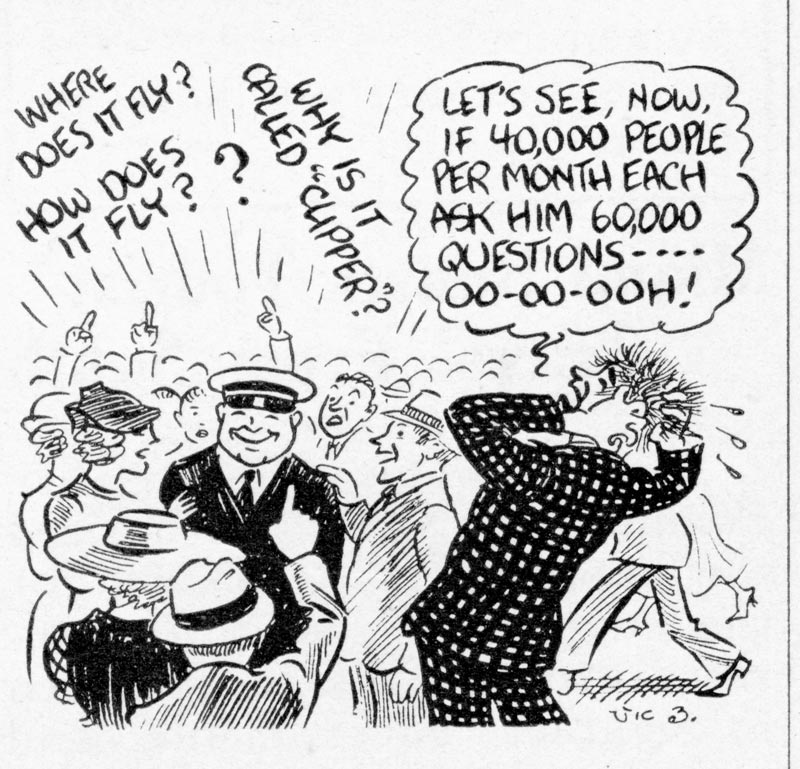
"Pan American Air Ways," July 1935, p.7 (PAHF Collection).
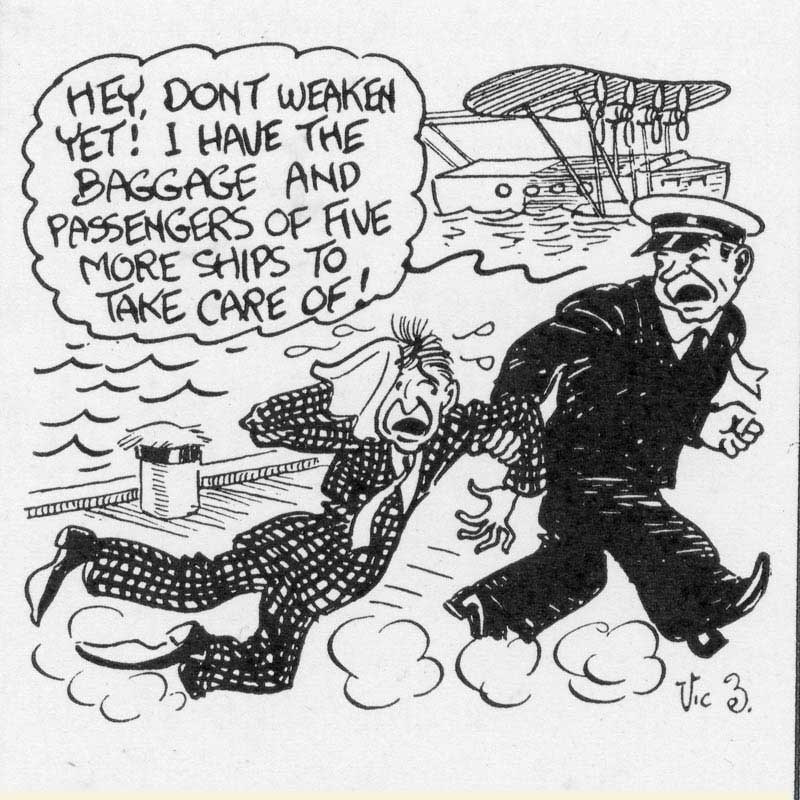
"Pan American Air Ways," February 1935, p.4 (PAHF Collection).
“If I had his job,” continued the writer, “I would want an outboard motor, roller skates and a wheel chair during the day, and a stretcher to go home on at night.”
Foot traffic grew so that January, February, March, and April 1937 set new Dinner Key visitor records at 50,000 per month (~1,600/day) (3) . In response, Ray Plummer and Ernest C. Pletcher joined Singer’s team to keep base operations moving smoothly and to give visitors the excellent experience they needed to move from the terminal’s balcony where they watched others board Pan Am’s Consolidated Commodores, Sikorsky S-38, Sikorsky S-40, and Sikorsky S-42 seaplanes to boarding a Clipper themselves as a ticketed passenger.
Not only could Singer sell a ticket to the “just looking around,” his ability to coax hesitant, first-time flyers aboard an aircraft was well known. Getting a self-defined “Biggest Coward on Earth” to use the round-trip ticket to Havana purchased by her husband who was eager to fly was typical of his calm, reassuring approach.
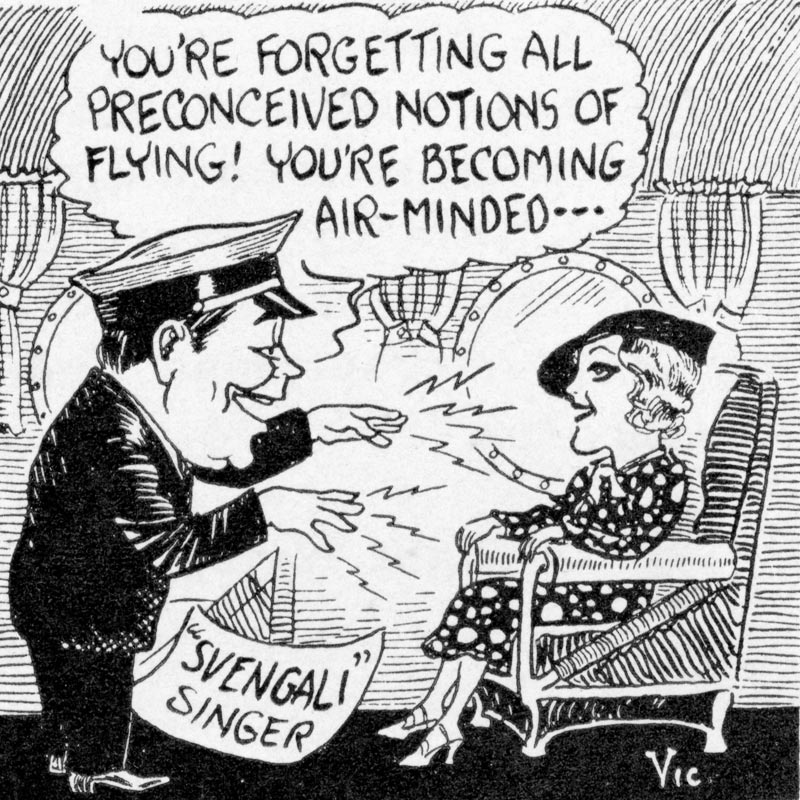
"Pan American Air Ways," July 1935, p.7 (PAHF Collection).
Following her panic attack and her husband’s cancellation of reservations, Singer went to the couple’s North Miami Beach winter home and invited her to “please visit the airport again just to watch the planes land and take off and see that there was no reason for fear.” She agreed, stating, “He was so patient and kind and spent so much of his time, I thought it was no more than right to accept his invitation just to show our appreciation." For two days she sat on the terminal’s second-floor veranda watching aircraft come and go and paying attention to the precision and professionalism that went along with all of this activity; then, much to her husband’s delight she allowed him to repurchase their tickets and they flew south to Cuba. On their return to Miami she wrote a thank-you letter praising Don Singer’s care and adding, “It was just as Mr. Singer explained: smooth, comfortable, enjoyable. Well, I must say this flight was the greatest achievement of my life.”
Singer and his “ground sales” team viewed everyone with whom they interacted as a guest and potential customer. And Don was exceptionally adept at helping visitors turn a free airport tour into a ticket-buying event.
• An Oldtimer. “Do You Remember?” The Pan American Clipper Vol. 1, No. 2 (August 1943), p. 20.


